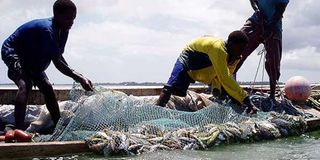TZ fish consumption wanting: report

What you need to know:
This is according to a report released in December 2016 by the then ministry of Agriculture, Livestock and Fisheries. The report attributes the lower consumption rate to low fish production.
Dar es Salaam. At seven kilogrammes per year Tanzania’s per capita fish consumption is still low, being only close to one-third of the global per capita consumption of 20kg per year.
This is according to a report released in December 2016 by the then ministry of Agriculture, Livestock and Fisheries. The report attributes the lower consumption rate to low fish production.
This means, Tanzanians miss out on at least 30 per cent of protein and this is attributed to irregular fish consumption.
“Over the last decade, Tanzania’s fish production has increased from 325,000 to 380,000 tonnes per year, largely due to poor fishing methods and technologies, lack of appropriate research and lack of adequate and timely financial resources,” the report states.
Furthermore, the Marine Fisheries Survey 2016 states that, although the number of fishermen increased by 50.08 per cent over the last seven years, and fishing craft and gear increased by 26 per cent, the country’s fish distribution facilities remained poor. This has resulted in difficulties in fish distribution to different markets, especially those located far from the Indian Ocean, lakes and rivers countrywide.
The survey also establishes that most fish is distributed by persons walking on foot (39 per cent), followed by motorcycle distributors (33 per cent), bicycle (19 per cent), car (six per cent), cart pushers (two per cent) and three wheelers (motorcycles 1 per cent).
“Most of the fish distribution methods make it difficult for people in distant areas to get fish – or do so by paying high prices,” part of the survey report reads. The government is currently implementing its National Fisheries Research Agenda (2015-2020), which aims at boosting the fisheries sub-sector to improve nutrition and enhance fishermen’s livelihoods.
The Agenda calls for improvement of offish distribution facilities, increased production and the quality of fish and fish products, identifying local and international markets, as well as preserving the natural environment. The fisheries sub-sector in the country has been experiencing some critical challenges, including illegal fishing, which destroys breeding habitats of fish species.




